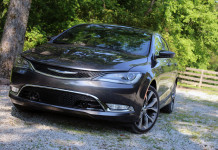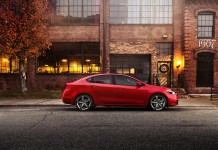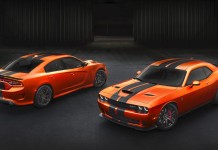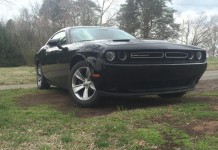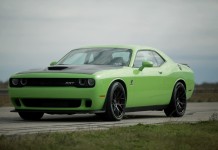In the late 1960s and early 70s, Dodge built some of the most iconic and successful full-bodied cars the world has ever seen. Machines such as the Coronet, Charger, Monaco and Polara commanded respect on the highways and byways and earned their rightful place in automotive history. Dodge was reveling in the success of their big-boned road cruisers and for a time, the full size rear wheel drive sedan was king. In the mid-1990s however, the brand went a different route and the once iconic muscle machines were no more, replaced with front wheel drive, politically correct cars such as the Intrepid and Stratus. Followed shortly after these vehicles was the near death of Chrysler LLC. Now that the other member of the big three is back on its feet, they have decided to dip into a little history in order to hit a home run with the 2011 Dodge Charger.
When the full size, front wheel drive Intrepid was axed in 2004, it wasn’t long after Dodge released its replacement. Given the most iconic name in Dodge history, the LX platform Charger was born and saw its first customers in 2005. It earned mostly positive reviews for its ample, Mercedes-Benz derived chassis and spacious interior. Not a brand to ingnore its customers, all the LX cars went through a redesign to create the second generation Chrysler 300 and Dodge Charger. Fortunately, the 2011 model year still shares that special persona and allure that made the first generation so successful.

For our time spent behind the wheel of a Charger, we did so in a 2011 Rallye. Starting out life as a $25,1750 SE base model, our tester came with standard features such as electronic stability control, keyless entry, cruise control, and hill start assist. For an additional $2,250, our Charger became a Rallye, earning features such as the Uconnect 8.4 inch touch screen control center, satellite radio, remote start, an eight way power adjustable driver’s seat with heating control and a rear anti-roll bar. The $650 Garmin supplied navigation system with rear back-up camera was installed as well as the $1,295 Rallye appearance package (20 inch chrome-clad wheels, rear spoiler, sport suspension) and a $295 coat of Toxic Orange paint. All total, our tester carried an MSRP of $30,485 with destination charge.
The Dodge Charger went through some changes for the 2011 model year per customer request. A subtle but affective redesign to the exterior has adopted a few styling cues from the most memorable Charger of all: the 1968-70 coke bottle. The side moldings and hood feature muscular cuts and give the 2011 a much sharper profile. The retro adaptations continue to the rear where the tail lights are now one piece and look very similar to the 60s models. The aggressive charm that was found on the 2005-2010 Chargers is not lost on the 2011, but is much more pronounced. Even in the outlandishly named Toxic Orange paint, our tester looks more maturely powerful than the previous generation did. This is even more so on the inside.


The interior is where the 2011 Charger adopts the most change. Chrysler listened to a lot of customer and industry complaints about outward visibility on the previous generation model, making that a priority to remedy. Remedy they did as the 2011 never suffered from a lack of view due to the windshield being stretched three inches higher than before. The seating position is just right, offering plenty of space all around the driver and passengers. The rental car-grade interior is gone, replaced with a much more upscale design. The optional 8.4 inch touch screen is the best we’ve sampled yet, managing to best the Infiniti G37’s we tested earlier. With the navigation package, the things that the Charger can do will simply astound. Real time weather updates, movie listings and gas prices can all be accessed in milliseconds and the media controls were never once confusing. This is one option that is easily worth the price and almost shouldn’t be overlooked if buying a Charger. For $30,000, the amount of stuff packed into our tester was fantastic. Considering we live in a world where a $53,000 BMW doesn’t come equipped with navigation, it is nice to see such technology packed inside a reasonably price automobile.



Under the hood of our tester is the Charger’s most common engine: the 3.6 liter Pentastar V6. In Charger form, Chrysler’s new corporate block produces 292 horsepower and 260 lb-ft of torque driving the rear wheels. Those are higher ratings than a similarly sized BMW 528i we tested last week and the proof could be easily felt. The Pentastar may not be a Hemi, but it can get the Charger up and moving in a hurry. The powerband is rather high as our tester built speed faster the higher it was revved but it never felt underwhelmed. Low end torque could be improved, but there were no complaints over making the climb to the Pentastar’s redline. For not having direct injection, this is a fantastic engine and worthy of being under the hood of the muscular looking Charger. The carry-over five speed automatic transmissions may not be the most sophisticated slush box on the market today, but it gets the job done. Upshifts and downshifts were never really harsh and it was willing to drop down gears for passing more often than not.
The Charger is quite, calm and controlled which make highway trips a breeze. Around town, it is nimble enough that it will go anywhere with ease and is large enough to do any, every day duty. Our tester managed to swallow an entire four unit family, all their luggage needed for a multi-week trip, and a driver without any concern. Even loaded down with hundred pound suitcases and strollers, our Charger didn’t flinch once on its heavy journey.

On paper, the 2011 Dodge Charger looks fairly competitive against its rivals. It is off paper where things get truly interesting as people utterly adore this car, especially in Rallye trim and Toxic paint. Our tester received numerous thumbs ups and complements and on one evening while sitting at a stop light with the windows down, a young man exclaimed, “Hey man, nice car!” Not one new car in recent testing has delivered more smiles per mile than our Charger; not even the Grand Sport Corvette Convertible. The steering is weighted just right and allows the massive Dodge to never reveal just how heavy it really is. Turn in shouldn’t be this quick on a car this size and the grip from the tires and suspension offer a sense of connection. The Charger doesn’t do things because you hit the right buttons, it does them because it listens to what you ask. The fun-to-drive factor is sky-high and simple trips to the grocery store were always accompanied with excitement. How Dodge managed to engineer soul into the Charger may never be revealed, but they did it. Hand-in-hand with entertainment is real world usability as our tester stayed comfortable, cool and composed no matter what. It is large enough to swallow a family and nimble enough to park without worry. For what it’s worth, this driver has found his next personal vehicle purchase: a 2011 Dodge Charger Rallye V6.










